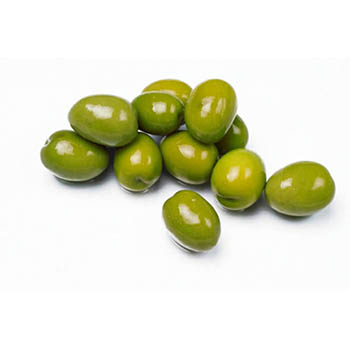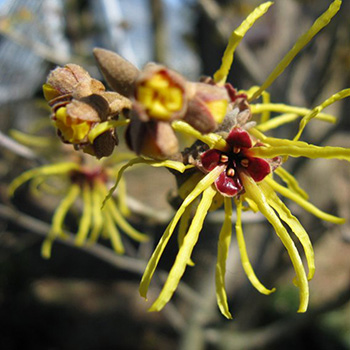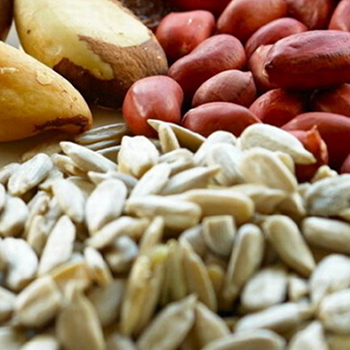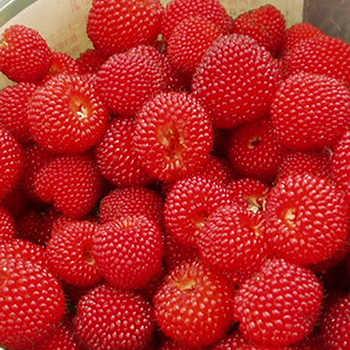目前購物車內沒有商品
Introduction
Pepper is the king of spices, being the most widely used condiment throughout the world. The unique aroma of the spice has been studied by various workers (1-5). Takahashi (6) reported the presence of mint sulphide and germacrene D in black pepper oil. Volatile compounds responsible for the distinct aroma and off flavor of black pepper and white pepper were studied by Jagella et al. (7). Nussbaumer et al. (8) detected the presence of m-mentha-3(8),6-die (isosylveterpinolene) in the black pepper and green pepper oil (0.12-0.17%). Even though pepper oil was studied and more than 130 compounds were identified, the individual cultivar oils are not studied in detail. Richard et al. (9) analyzed 17 cultivars for their oil composition and identified 28 components. Lampong and Sarawak cultivars were analyzed for volatile compositional differences by Russel et al. (10). Sumathy et al. (11) studied Karimunda and Kalluvally cultivars for their proximate composition and volatile oil composition. Gopalakrishnan et al. (12) studied four selected cultivars of pepper and identified 67 compounds by GC/MS and retention indices. Ve studied the oils of eight prominent cultivars-viz.; Karimunda, Kalluvally, Arakulammunda, Vellanamban, Kottanadan, Ottaplackal, Kuthiravally and Cheriakaniakadan-for three seasons (13,14) and identified 55 compounds and their seasonal variations. The present paper reports the oil composition of yet another set of four major cultivars of black pepper. The cultivars selected for this study are Thevanmundi, Poonjaranmunda, Valiakaniakadan and Subhakara. To the best of our knowledge no work has been carried out so far on the cultivars, Poonjaranmunda, Thevanmundi and Subhakara.
The fresh berries of the authenticated cultivars were collected from Indian Institute of Spices Research, Calicut, and were dried in a cross flow drier at 45 deg C and taken for the analysis. Moisture, starch, piperine, crude fibre, ash and volatile oil were determined as per A.O.A.C methods.
Gas chromatography: Gas chromatographic analyses were carried out in a Hewlett-Packard gas chromatograph, model 5890-II GC equipped with electronic integrators. Carbowax and methyl sillicone columns were used (50 in x 0.2 mm, 0.17 (mu)m) for the analyses. The conditions were as follows: temperature programming from 80 deg - 200 deg C, held at 80 deg C for 1 main and at 200 deg C for 20 min; F.I.D. temperature 300 deg C, injection temperature 250 deg C; carrier gas: nitrogen at a flow rate of 1 mL/min, split ratio of 1:75.
GC/MS analysis: GC/MS analyses were carried out in a Hewlett-Packard gas chromatograph under the following conditions. GC conditions were the same as in the capillary GC analyses. MS conditions were as follows: electron impact, ionizing voltage 70 eV, source temperature 150 deg C, electron multiplier at 2000 eV, scan speed 690 amu/s and scan range 40-- 500 amu. Component identifications were accomplished by comparing retention indices and mass spectra of each compound with those of authentic samples and library, and literature (15-18).
Results and Discussion:
Gives the chemical composition of the pepper oil samples for the three seasons 1990-1992. Fifty-five compounds were identified in the oil samples. In general, it can be seen that the chemical composition varied widely as reported earlier. There was variation in each cultivar in the quality factors during the years probably due to variations in agroclimatic conditions. For example sabinene varied from 0.2% in Subhakara to 17.1% in Valiakaniakadan. delta-3-Carene varied from 0% in Valiakaniakadan in 1990 to 23.4% in Subhakara in 1991. Limonene varied from 8.3% in Thevanmundi oil to 22.7% in Subhakra oil.
alpha-Cubebene varied from 0.1% in Poonjaranmunda oil (in the season 1990) and in Subhakara oil (in the seasons 1990 and 1992) to 6.8% in Thevanmundi oil (in the season 1992).
beta-Caryophyllene, which is the main sesquiterpene hydrocarbon of the pepper oil, varied from 7.6% in Subhakara (season 1990) sample to 38.4% in Valiakaniakadan oil (season 1992). Elemol content varied from 0.7 % in Subhakara oil (season 1990) to 9.6% in Thevanmundi oil (season 1992). It is quite unusual to have a high content of elemol in pepper oil. Another oxygenated compound caryophyllene oxide varied from 0.4% in Subhakara oil (season 1991) and in Poonjaranmunda oil (season 1991) to 6% in Subhakara oil (season 1990).
The association of a badnavirus with disease-affected black pepper leaf samples collected from Kozhikode (Calicut) and Wyanad districts of Kerala was established on the basis of symptomatology, vector transmission,electron microscopy and serology. The virus induces vein clearing,chlorotic flecks, chlorotic mottling along veins and characteristic curling of leaves leading to reduced vigour and yield. The virus was
transmitted from diseased to healthy black pepper plants by grafting and mealybug (Ferrisia virgata).
The virus could also be transmitted by mechanical means with difficulty to black pepper, but not to other hosts tested. The virus showed positive serological relationship with Banana streak virus (BSV) and Sugarcane
bacilliform virus (ScBV) in direct antigen-coated enzyme-linked immunoassay (DAC-ELISA) using polyclonal antisera. The exact taxonomic identity of the virus remains to be determined.
In India, only the association of a CMV has been established with stunted disease-affected black pepper samples5.In addition, a mosaic disease on black pepper was observed in serious proportions in parts of Kerala for the
past few years. Up to 100% incidence of this disease has been reported in certain black pepper plantations, especially in Kozhikode and Wyanad districts. The disease is characterized by vein clearing, scattered chlorotic flecks
(Figure 1 a) followed by chlorotic mottling along veins leading to interveinal chlorosis and characteristic curling of the leaves (Figure 1 b). In a few cultivars, vein banding, vein thickening and green island-like symptoms are
also seen. The infected vines had reduced vigour and yield. Though the disease has been noticed on all the cultivars, its incidence and severity was more on Karimunda. Since it has not been established so far, we report
the results of our studies which revealed the association of a badnavirus based on its transmission, electron microscopy and serological characteristics.
The virus isolate was collected from black pepper vines from plantations in Kozhikode and Wyanad districts, including the experimental farm at the Indian
Institute of Spices Research (IISR), The isolate was maintained on
black pepper by vegetative propagation under insectproof
glasshouse conditions at 25–28°C.
For mechanical inoculation, the inoculum was prepared by extracting the
sap using chilled 0.1 M phosphate buffer (pH 7.2) containing 0.1% 2-mercaptoethanol poured in mortar kept in an ice tray. The inoculum was rubbed on the leaves of test plants dusted with celite or carborundum powder. For host-range studies, plants belonging to four families namely, Cucurbitaceae (Cucumis sativus, C. pepo), Fabaceae (Cajanus cajan, Glycine max, Vigna mungo, V. radiata, V. unguiculata), Poaceae (Zea mays) and Solanaceae (Nicotiana benthamiana, N. glutinosa, N. tabacum, Physalis
floridana) were grown in pots raised under insectproof glasshouse, and were rub-inoculated. Ten plants of each species were inoculated and kept under observation for two months. For graft transmission, scions from disRESEARCH.
Effect of gamma-irradiation on antioxidant activity of black pepper
(Piper nigrum L.)
Abstract:
Antioxidant activity and EPR investigations of irradiated ground black pepper (Piper nigrum L.) were evaluated. The black pepper was exposed to gamma-irradiation at doses from 5 to 30 kGy. The effect of irradiation on antioxidant properties of black pepper extracts was investigated by radical scavenging effect on 1,1-diphenyl-2-picrylhydrazyl (DPPH) radicals, by determination of reducing power and content of thiobarbituric acid reactive substances. Irradiation of ground black pepper at the doses studied shows some significant influences on the antioxidant activities.
Some significant changes were observed in creation of thiobarbituric acid reactive substances (TBARS).
Difference between non-irradiated and irradiated sample at a legal European limit dose of 10 kGy reached in average 23 % and at Food and Drug Administration (FDA) 30 kGy limit 33 %.
Irradiation at searched doses did not affect significantly the DPPH radical-scavenging activity and reducing power of ground black pepper extracts. In opposite to irradiation treatment with exception the TBARS values, more significant changes of antioxidant activity studied by DPPH radicalscavenging activity and reducing power were caused by storing of irradiated and non-irradiated black pepper. The γ-radiation treatment of ground black pepper samples observed by EPR, resulted in the production of three paramagnetic species (GI-GIII) characterized by different origin, thermal
behavior and stability. The axially symmetric EPR resonances GI and GII were assigned to the carbohydrate radical structures. The spin Hamiltonian parameters of GIII possessed the characteristic features of “cellulosic” radical species. The EPR measurements performed 20 weeks after radiation process confirmed that temperature increase from 298 K to 353 K, caused significant
decrease of integral EPR signal intensity for γ-irradiated samples (~ 40 %),
comparing to the reference (non-irradiated) ground black pepper, where only 13 % drop was found.
In vivo and in vitro studies in experimental systems have indicated systematical

Piperine is an alkaloid found naturally in plants belonging to the Piperaceae family, such as Piper nigrum L, commonly known as black pepper, and Piper longum L, commonly known as long pepper. Piperine is the major pungent substance in these plants and is isolated from the fruit of the black pepper and long pepper plants. Piperine comprises 1 to 99% of these plants. The term black pepper is used both for the plant Piper nigrum and the spice that is mainly in the fruit of the plant.
Piperine is a solid substance essentially insoluble in water. It is a weak base that is tasteless at first, but leaves a burning aftertaste. Piperine belongs to the vanilloid family of compounds, a family that also includes capsaicin, the pungent substance in hot chili peppers. Its molecular formula is C17H19NO3, and its molecular weight is 285.34 daltons. Piperine is the trans-trans stereoisomer of 1-piperoylpiperidine. It is also known as (E,E)-1-piperoylpiperidine and (E, E)-1-[5-(1, 3-benzodioxol-5-y1)-1-oxo-2, 4-pentdienyl] piperidine. It is represented by the following chemical structure:

Black pepper and long pepper have been used in Ayurvedic medicine for the treatment of various diseases. One such preparation is known by the Sanskrit name trikatu and consists of black pepper, long pepper and ginger. Another preparation, known by the Sanskrit name pippali, consists of long pepper. It is thought that piperine is one of the major bioactive substances of these Ayurvedic remedies. Black pepper has also been used in traditional Chinese medicine to treat seizure disorders. A derivative of piperine, antiepilepsirine, has also been used in China to treat seizure disorders. Some recent research suggests that piperine may enhance the bioavailability of some drugs and nutritional substances.
ACTIONS AND PHARMACOLOGY
ACTIONS:
Piperine may have bioavailability-enhancing activity for some nutritional substances and for some drugs. It has putative anti-inflammatory activity and may have activity in promoting digestive processes.
PHARMACOKINETICS:
The pharmacokinetics of piperine in humans remains incompletely understood. In rats, piperine is absorbed following ingestion, and some metabolites have been identified: piperonylic acid, piperonyl alcohol, piperonal and vanillic acid are found in the urine. One metabolite, piperic acid, is found in the bile. Human pharmacokinetic studies are needed.
INDICATIONS AND USAGE:
Piperine, in appropriate doses, may be useful in increasing the bioavailability of some drugs and nutrients. There is very preliminary evidence suggesting that piperine may aid in the digestion of food. There is also preliminary evidence that it may have some anticonvulsant, anticarcinogenic and anti-inflammatory properties. On the other hand, there is also preliminary evidence that it might be carcinogenic and cytotoxic in some circumstances and that it might interfere with reproductive processes and have negative effects on sperm.
RESEARCH SUMMARY:
There are in vitro, animal and human studies demonstrating that piperine can significantly increase the bioavailability of numerous drugs and some nutritional supplements. Reportedly, it has demonstrated this effect with some antimicrobial, antiprotozoal, antihelmintic, antihistaminic, non-steroidal anti-inflammatory, muscle-relaxant and anticancer drugs, among others. It has also increased the bioavailability of coenzyme Q10, curcumin and beta-carotene.
In humans given 2-gram doses of curcumin alone, levels of curcumin in serum were undetectable to very low one hour post-administration. Concomitant administration of 20 mg of piperine was said to significantly increase absorption and bioavailability (by 2000%). Similar results were reported in rats.
In a double-blind crossover study, 5 mg of piperine daily for 14-day periods resulted in significant increases in serum beta-carotene levels. The same dose of piperine produced similar results in another study, this one involving coenzyme Q10.
The claim that piperine may aid in the digestion of food is based on some experimental animal data showing that dietary piperine seems to enhance pancreatic amylase lipase, trypsin and chymotrypsin activity.
The claim that piperine may have some anticonvulsant activity comes, in part, from China, where the substance is used in an effort to treat some forms of epilepsy. In mice, piperine injected intraperitoneally inhibited clonic convulsions induced by kainate. It did not significantly block seizure activity induced by L-glutamate, N-methyl-D-aspartate or guanidinosuccinate.
In a rat intestinal model, piperine was said to provide protection against oxidative changes induced by a number of chemical carcinogens. In another study, this one in vitro, piperine reportedly reduced the cytotoxicity of aflatoxin B1 in rat hepatoma cells.
Piperine exhibited significant anti-inflammatory activity in carageenan-induced rat paw edema and in some other experimental models of inflammation. In one animal study, piperine reduced liver lipid peroxidation, acid phosphatase and edema induced by carageenan.
On the negative side, piperine has shown some evidence of being mutagenic and potentially carcinogenic under some circumstances. It has reportedly given rise to mutagenic products on reaction with nitrites. This causes concern since nitrites and piperine may be consumed simultaneously. Risk might increase with high-dose piperine supplementation. In another study, piperine appeared to enhance the bioavailability of aflatoxin B1 in rat tissues. And in yet another study, piperine was found to be cytotoxic to cultured brain neurons. Piperine was said to be non-mutagenic, however, in a study examining effects of the substance on the germ cells of Swiss albino mice.
In a recent study utilizing albino rats, piperine, given at doses of 5 and 10 mg/kg body weight for 30 days, resulted (at the 10-mg/kg dose level) in significant reduction in the weights of testes and accessory sex organs as well as severe damage to seminiferous tubules. The 5-mg/kg dose resulted in partial degeneration of germ cells.
Decreased mating performance, decreased fertility and anti-implantation activity, along with some other adverse reproductive events, were observed in mice given very high doses of piperine.
Pregnant women and nursing mothers should avoid piperine supplementation.
Piperine at doses generally higher than 15 mg daily may affect the metabolism of a wide range of drugs and xenobiotics (see Interactions). In some cases, doses lower than 15 mg daily may affect the metabolism of these substances. Those using the drugs listed in Interactions should exercise caution in the use of piperine supplements.
Piperine may form mutagenic and possibly carcinogenic substances with nitrites. Those who eat processed food containing nitrites and nitrates as food preservatives should exercise caution in the use of piperine supplements.
ADVERSE REACTIONS
The typical dose of piperine in nutritional formulas is 5 milligrams, and doses of 15 milligrams daily are rarely exceeded. No adverse reactions have been reported with these doses. Piperine, if exposed to the tongue, is tasteless at first but leaves a burning aftertaste.
INTERACTIONS
DRUGS:
Piperine, usually at a dose of 20 mg or greater, has been shown to inhibit the metabolism of the following drugs: propanolol, theophylline, phenytoin, sulfadiazene, rifampicin, isoniazid, ethambutol, pyrazinamide and dapsone. This list is not inclusive. Piperine is a nonspecific inhibitor of drugs and xenobiotics. Most drugs metabolized via cytochrome P450 enzymes would likely be affected by piperine.
NUTRITIONAL SUPPLEMENTS:
Piperine at a dose of 5 mg daily has been found to enhance the absorption of beta-carotene and coenzyme Q10. At a dose of 20 mg daily, it has been found to enhance the absorption of curcumin. Piperine may also enhance the absorption of vitamin B6, vitamin C and the mineral selenium in the form of L-selenomethionine.
FOOD:
Piperine may enhance the absorption of beta-carotene, vitamin B6, Vitamin C and L-selenomethionine found in certain foods.
DOSAGE AND ADMINISTRATION:
Piperine is available in stand-alone supplements and in combination products. A typical dose is 5 mg daily. Doses higher than 15 mg daily should be avoided.




